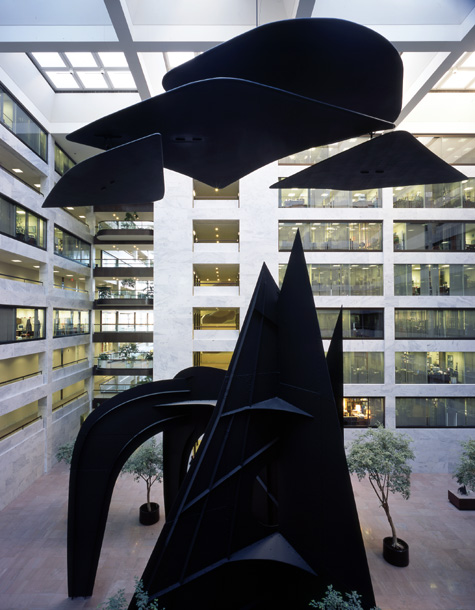Art World
Connecticut Senator Fights to Restore Calder Sculpture


Cait Munro

Alexander Calder’s Mountains and Clouds, an enormous sculpture in black aluminum, has dominated the 90-foot atrium of the Hart Senate office building in Washington, DC since 1986. But for the last decade of its tenure, the “clouds” that once gently rotated have hung motionless due to a bearing failure.
“Right now it’s not really a Calder in that it’s not really doing what Calder wanted it to do,” lamented Connecticut senator Chris Murphy. According to the Wall Street Journal, Murphy is spearheading a campaign to restore the 4,300 pound sculpture to its original mobility.
Unfortunately for the art-savvy senator, not everyone on Capitol Hill believes it to be a worthy cause.
“Is that one of the pressing problems we have now in the Capitol?” asked West Virginia Democratic senator Joe Manchin. “I could live without that,” echoed Utah Republican Orrin Hatch, who also referred to the sculpture as “a huge thing.”
This isn’t the first time that an enterprising member of the senate has had to step in on behalf of the artwork. Calder won the commission in April, 1976 at the age of 77, but passed away just months later. In 1979, before any work on it had begun, Congress cut funding for the sculpture. But three years later, senator Nicholas Brady, a Republican from New Jersey, helped raise $650,000 to ensure its completion.
Senator Murphy is seeking to drum up support for the restoration next year, after the Architect of the Capitol completes an assessment of whether a 2011 earthquake damaged its sculptural integrity.
“After we know what we’re dealing with, maybe it’ll become a bit more of a public debate,” he said. “People have strong feelings about the entire building.”
Nelson Young, an engineer who helped construct and program the clouds when they were first installed thinks repairing them would be a relatively inexpensive and painless endeavor. “Washington may complicate this, but it ain’t difficult,” he said. “It’s not rocket science.”